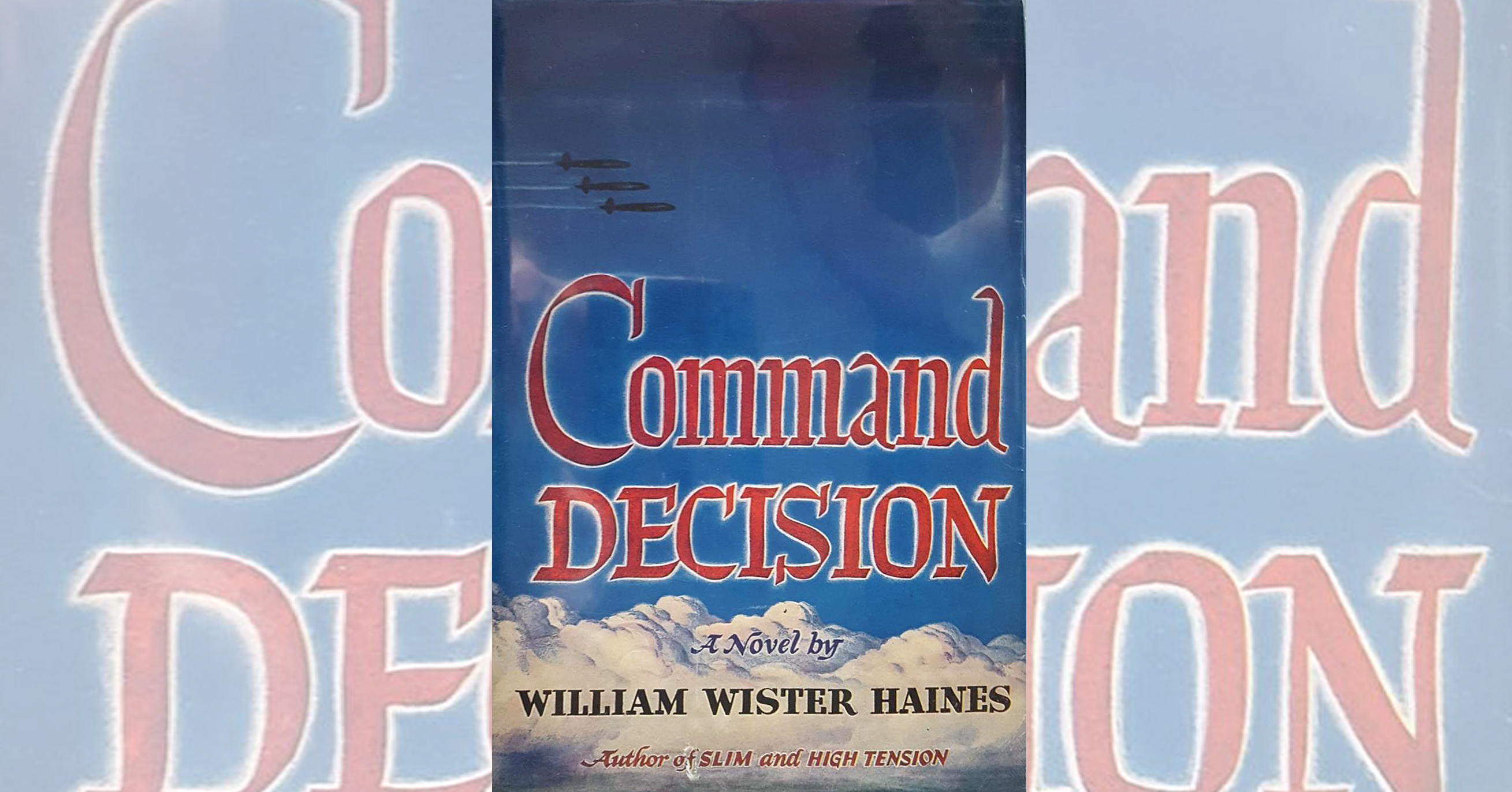Command Decision by William Wister Haines
12 O’Clock High, published in 1948 by Bernie Lay Jr. and Sy Bartlett, and Command Decision, published a year earlier by William Wister Haines, are the two great novels of the bombing campaign to come out of World War II. Both of the books were turned into critically acclaimed movies, and 12 O’Clock High was also a popular television series during the 1960s. Perhaps for that reason more than anything else, 12 O’Clock High tends to overshadow Command Decision today. But although they both tell similar stories in the broadest sense, these are two very different books that deal with the moral and leadership issues of combat command at completely different levels.
12 O’Clock High focuses squarely on a single heavy bombardment group, which normally had 48 aircraft. The group was the sharp end of the stick of the bombing war, the level at which the group commander had to look directly into the eyes of the crews he sent up each day, fully knowing the statistical averages of how many would not return. Command Decision, on the other hand, focuses on a bombardment division, which typically consisted of three to five combat bombardment wings of three to five bomb groups each. At that much higher level the war was far less directly personal, but each decision of the division commander had a much wider impact on the war itself, as well as on the lives of many more crewmen. Those decisions were even more gut-wrenching for the commander who had to make them.
In Command Decision that commander is Brig. Gen. K.C. Dennis, leader of the fictional 5th Bombardment Division. Although Dennis’ higher headquarters is never specifically identified in the narrative, it is clear to even the most casual reader that it is the fabled Eighth Air Force, flying from bases in England against enemy targets on the Continent.
Dennis is faced with executing a complex operation of three sequential maximum effort strikes against German industrial targets far beyond the range of fighter cover. Each of the factories makes critical components for a new jet fighter the Luftwaffe is rushing to build and put into service to reverse the tide of the war. As history actually played out, the Germans did get the Me-262 into service, but fortunately for the Allies too few, too late.
Balanced against the obvious importance of the targets, Dennis has to deal with the public outcry and political fallout that three heavy-loss missions in a row inevitably produce, plus the devastating impact that such missions have on the morale of his own crews. “Milk runs” between tough missions are good for morale, but Dennis has only a very narrow weather window to get all three targets, and no slack for milk runs. Besides, as Dennis knows only too well, milk runs can produce casualties too, and every crewman lost on an easy mission is a loss that makes no contribution to ending the war, even though that mission contributed to the statistical record of sorties flown and tonnage dropped.
Thus every day of the war Dennis has to wrestle with the cold-blooded calculus that dictated:“Forty planes was cheap for a target of consequence. One boy killed for statistical effect was wanton murder.” But what made Dennis’ personal hell even grimmer was the fact he could not fly any of those missions himself, because he had long since been medically grounded, the result of too much high-altitude flying in the early days of unpressurized cockpits.
Command Decision makes it quite clear that precision bombing was still an unproved theory throughout WWII, but it was one that most air commanders passionately believed in. Just how effective was the bombing campaign? More than 65 years after the conflict’s end historians are still debating that question, and military theorists are still arguing about the feasibility of winning a war solely or primarily from the air.
You won’t find the answer to those questions in Command Decision. But the moral and ethical lessons for leadership and high command are timeless. One can easily picture senior U.S. Air Force commanders grappling with similar dilemmas during Operation Linebacker II over North Vietnam in 1972.
Originally published in the January 2012 issue of Aviation History. To subscribe, click here.





